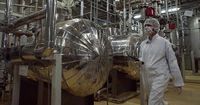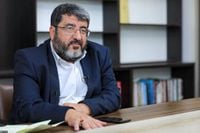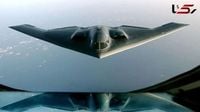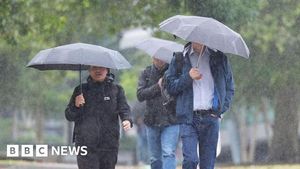On October 19, 2025, Rafael Grossi, Director General of the International Atomic Energy Agency (IAEA), addressed the world’s mounting concerns over Iran’s nuclear ambitions in a candid interview with the Swiss newspaper Neue Zürcher Zeitung. Grossi’s statements, echoed by multiple international news outlets, offered a rare glimpse into the current state of Iran’s nuclear program, the aftermath of recent airstrikes on Iranian facilities, and the broader regional and economic implications of the decades-long nuclear standoff.
Grossi made it clear that, despite years of suspicion and tension, IAEA inspectors have found no evidence that Iran is hiding significant amounts of enriched uranium at undisclosed locations. "Most of Iran’s enriched material is stored at the known facilities in Isfahan and Fordow, and to some extent in Natanz. A small portion may have been moved elsewhere," Grossi told Neue Zürcher Zeitung. He estimated that Iran currently possesses around 400 kilograms of highly enriched uranium, a figure that, while alarming to some, has not translated into the immediate threat of a nuclear weapon—at least not according to the current evidence.
However, Grossi cautioned that concerns about Iran’s possible path to a nuclear weapon have not been fully ruled out. Inspectors’ access to Iran’s nuclear sites, especially those damaged by recent attacks, remains at the mercy of Tehran’s willingness to cooperate. “IAEA inspectors will only gain access to Iran’s nuclear sites when Tehran sees it as being in its own interest,” Grossi noted, a stark reminder of the delicate dance of diplomacy and sovereignty that defines nuclear oversight in the region.
That delicate balance was dramatically disrupted on June 22, 2025, when the United States, with advance notice to Tehran, launched strikes on three of Iran’s key nuclear facilities: Fordow, Isfahan, and Natanz. According to Iranian political analyst Foad Izadi, Washington not only warned Iran about the impending attack but also asked which U.S. base Iran would target in retaliation. “The Americans said: ‘We will attack, and you will retaliate by striking one of our bases.’ They simply wanted to know which base we would choose,” Izadi revealed via the Azad Iran Telegram channel. True to form, Iran responded the same day with a missile strike on the U.S. Al Udeid Air Base in Qatar, underscoring the ever-present risk of escalation in the region.
These military exchanges left real scars. The Fordow facility, in particular, was reportedly “very significantly” damaged underground—a fact confirmed by Iran’s own foreign minister, who described the site as “seriously and heavily damaged.” In the aftermath, Tehran acknowledged that some enriched uranium remained buried under the debris, though neither Iran nor the IAEA detected any increase in external radiation. The strikes, and the subsequent diplomatic fallout, have only amplified the urgency of finding a peaceful solution.
Grossi remains optimistic that diplomacy can prevail. “Bringing all parties back to the negotiating table can save us from another round of bombings and attacks,” he insisted. He pointed to recent comments by former U.S. President Donald Trump, who expressed a readiness for renewed talks with Iran and advocated for a diplomatic path forward—even referencing Iran during a speech in the Israeli Knesset. “Hearing such statements from President Trump is encouraging. He even mentioned Iran during his speech in the Knesset, saying he believes in a diplomatic path. That was a clear stance—just months after the U.S. and Israeli attacks on Iran,” Grossi said.
Yet, the nuclear crisis cannot be viewed in isolation. Grossi emphasized that “the Iranian question cannot be separated from the wider regional context. Ultimately, two issues will determine the future of the Middle East — the situation in Palestine and the future of Iran.” The reimposition of sanctions and the activation of the “snapback” mechanism by Germany, France, and the UK have not pushed Iran out of the Nuclear Non-Proliferation Treaty (NPT), but cooperation with the IAEA is still “not at the desired level.” Grossi called for patience and mutual understanding, underscoring that resolving Iran’s nuclear issue will require more than technical inspections—it demands a broader, more inclusive regional dialogue.
For ordinary Iranians, the nuclear standoff has come at a staggering cost. Decades of uranium enrichment and international brinkmanship have led to national devastation, draining Iran’s wealth, crushing scientific potential, and pushing millions into poverty. The regime’s relentless pursuit of nuclear capability, under Supreme Leader Ali Khamenei, has been described by critics as a “monument to failure.” As detailed by the National Council of Resistance of Iran (NCRI), the program has not only failed to deliver an atomic bomb but has also undermined the very foundations of Iran’s development.
Regime economist Mohsen Ranani, drawing on Nobel laureate Douglass North’s theories, highlighted three essential conditions for sustainable growth: the withdrawal of the military from politics and the economy, subordination of rulers to the rule of law, and the establishment of stable, long-term institutions. Iran’s nuclear ambitions, he argued, have destroyed all three. The Revolutionary Guards (IRGC) have entrenched themselves in key sectors, distorting markets and crowding out private investment. The regime’s disregard for the rule of law has legalized corruption and chaos, while the absence of stable institutions has driven away both domestic and foreign investors, leaving Iran’s youth mired in despair and unemployment.
The economic toll is almost unfathomable. Independent, peer-reviewed work using the synthetic control method estimates Iran’s lost output at about $1.2 trillion from 2011 to 2022—roughly $14,000 per person. Some regime insiders have cited even higher figures, with former senior diplomat Qasem Mohebali estimating close to $2 trillion in losses, mostly from sanctions and knock-on economic damage. Former Foreign Minister Mohammad-Javad Zarif and other officials have echoed these trillion-dollar scales, underscoring the devastating impact of nuclear-linked sanctions.
From a scientific perspective, critics argue that the resources devoted to uranium enrichment could have financed dozens of particle accelerators, fueling genuine research and innovation rather than perpetuating a costly ideological contest. Sharif University physicist Reza Mansouri lamented that the regime’s fixation on the nuclear fuel cycle has stifled Iran’s scientific and technological progress, turning what could have been a driver of prosperity into a source of isolation and decline.
The nuclear standoff reached its nadir with the direct military confrontation of June 2025 and the subsequent tightening of economic sanctions. Khamenei’s inflexibility, as some see it, has turned Iran into a hostage of its own policies, offering adversaries every pretext for further isolation and economic strangulation. The program’s legacy, according to the NCRI, is not an atomic weapon but "a bomb that exploded inside Iran’s own economy and society." While the world moves toward renewable energy and innovation, Iran remains chained to the past—a victim of a regime that equates delusion with strategy and domination with strength.
As Grossi and other international actors continue to press for diplomatic solutions, the fate of Iran’s nuclear program—and by extension, the future of the Middle East—hangs in the balance. The choices made in the coming months will determine whether Iran can break free from the cycle of confrontation and sanctions, or whether the shadow of nuclear ambition will continue to darken its prospects for generations to come.






